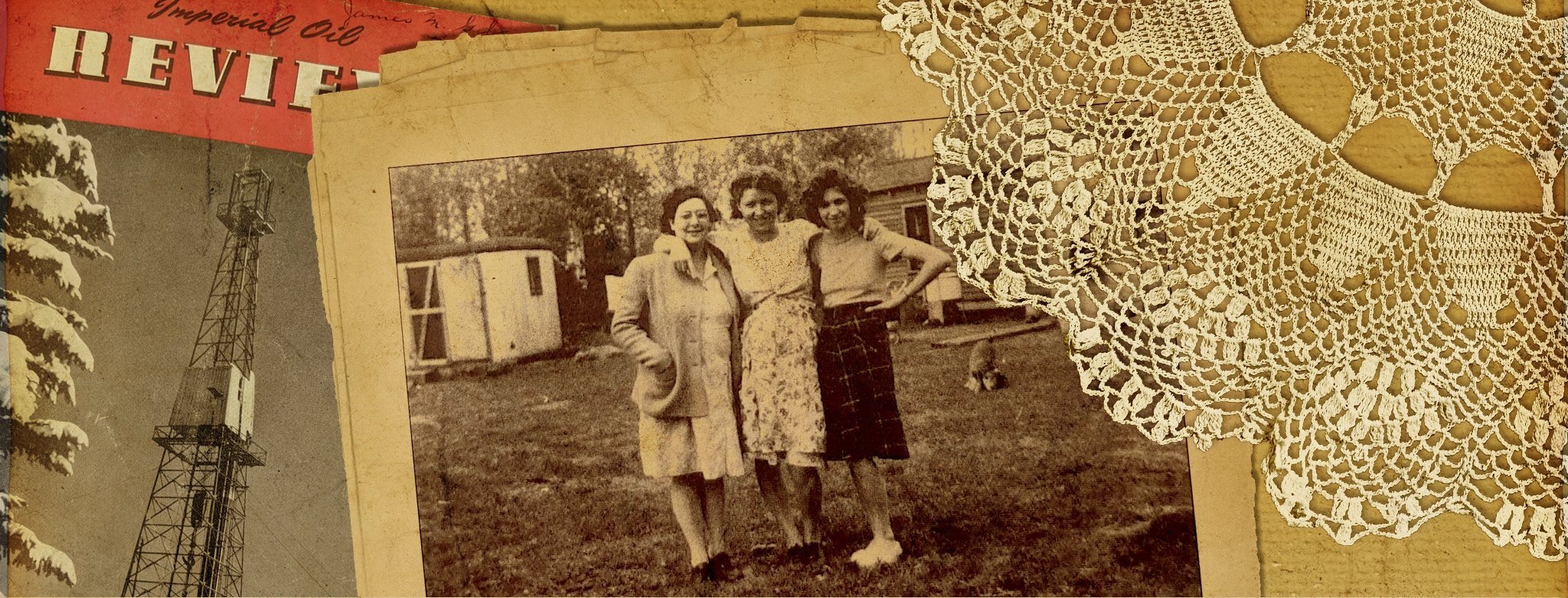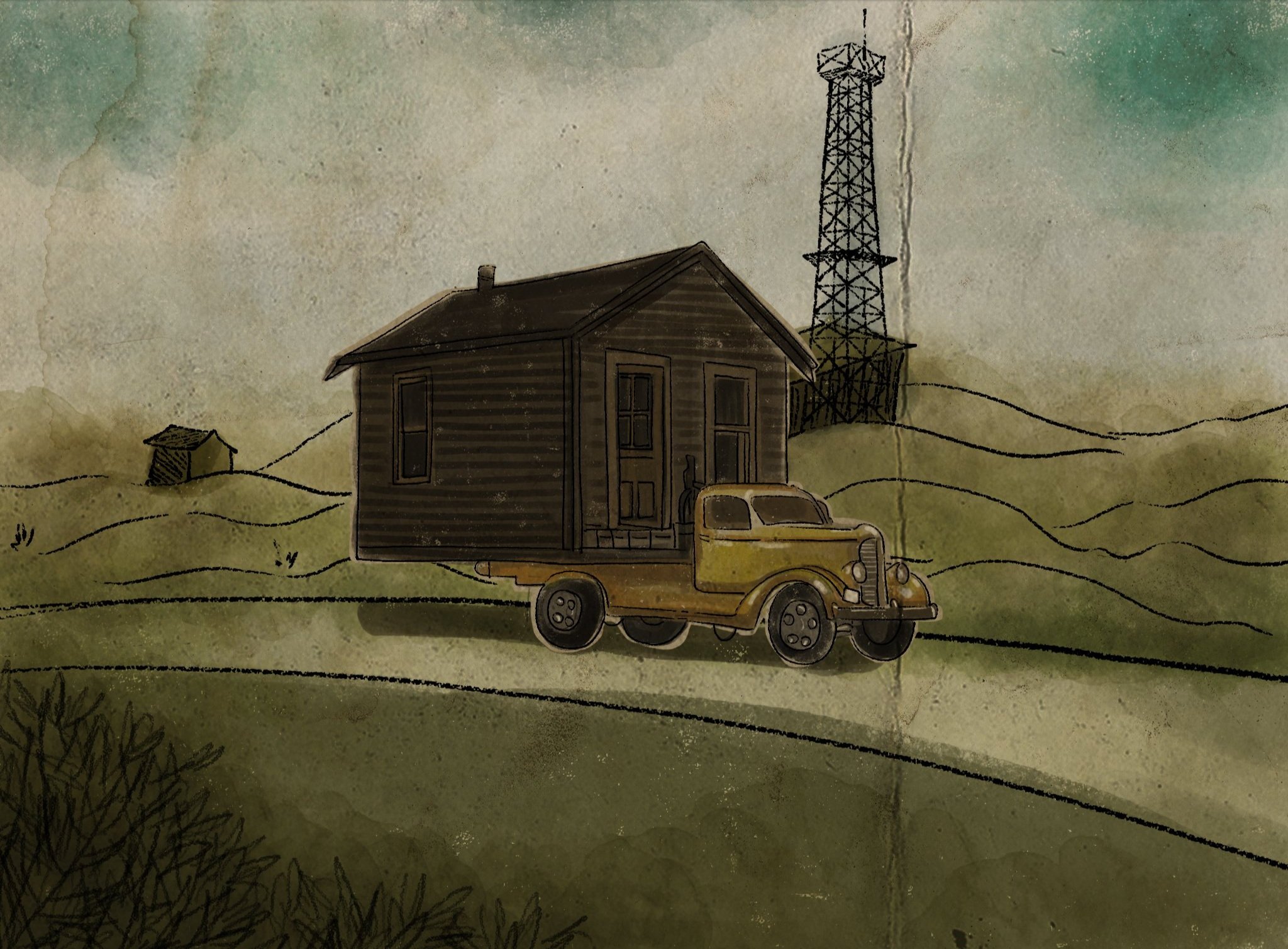
Zahra Jafarzadeh, Untitled, Digital Painting, 2024
Rethinking Roughnecks: Gender and Work in 20th and 21st Century Alberta
First Stop: Devon and Leduc!
In Alberta, the `roughneck,' or male oil rig worker, has been a persistent stereotype in historical and contemporary narratives. Our first project for Rethinking Roughnecks reveals the role of women and families in oil exploration and extraction, and proposes to renarrate the story of mid-century oil exploration in Leduc, Alberta, combining archival research, audio and animation, as well as photogrammetry, computational media design and app development in an interactive curated augmented reality (AR) experience available to museum visitors at the Canadian Energy Museum (CEM), as well as to the general public in Canada.
In spring 2022, Energy Stories Lab Co-Directors and two Lab Associates (Straathof, Jafarzadeh) began collaborative discussions with the CEM's Executive Team about how AR storytelling could be used to rethink the presentation of Alberta's energy history. CEM's current exhibit focuses exclusively on the work of male rig workers and executives from Imperial Oil. Our team located women's oral histories in the CEM archive which demonstrate that women were active but invisible participants in the oil economy: hauling water, providing meals, laundry, unpaid secretarial labour, and securing land for Imperial from Leduc County.
Cover of The Roughneck magazine, July 1954 (Vol.2, No 9), Canadian Energy Museum.
Many women were employed globally as translators by Imperial Oil. Imperial Oil Review, April 1946. Canadian Energy Museum.
Imperial Oil scholarship winners on the University of Toronto campus. Imperial Oil Review, December 1946. Canadian Energy Museum.
Many oil wives described their experience following their husband's job from rig to rig. Imperial Oil Review, June 1960. Canadian Energy Museum.
Publications from the 1940s provide often contrasting views on women: from the Alberta's widely distributed The Roughneck magazine, which most often reductively portrayed young single women as fantasies for roughneck worker, to corporate publications like Imperial Oil Review, which highlighted the integration of women into the oil economy as educated employees. These dichotomous approaches were not uncommon in mid 20th century North American, where women's battles for political and economic equality often dovetailed with projects of extractive capitalism.

Using AR to (re)tell StoriesIn our collaboration with the Canadian Energy Museum (CEM), we have written up women's stories based on collected materials from the CEM archives; we have created a 3D digital scan of a skid shack - the cabin structure that housed oil families on the Leduc oil site; and we have created a an augmented reality (AR) app that has been integrated into the CEM exhibit on the Leduc find. Users are able to download the app as an accompaniment to the physical exhibit. They are not only able to walk into the skid shack, but interact with the objects in the shack, and learn about women's and families' stories through audio stories and animations.

Stories to Listen and WatchCheck out some of the animations and audio stories by Zahra Jafarzadeh and Sabrina Perić (respectively) that are part of the AR experience below. These stories have resulted from and been inspired by our collaboration with the Canadian Energy Museum.
Do you want to learn more about Zahra’s storytelling animation process?
Listen to this podcast!
Want to check out a 3D model?Gerry Straathof and Jean-René Leblanc created an early version of our 3D skid shack in Sketchfab. You can visit, and play around with it by clicking on the button below.

SkidShack AR AppIn January 2024, we completed our SkidShack AR experience, created in collaboration with the Canadian Energy Museum. You can download the app by scrolling down on this page.
Through the SkidShack AR app, we provide an experience of being inside a typical 8 x 16 foot family dwelling. Through AR, you can view the building or scale it up, walk inside, take a look around, and interact with numerous objects. Click on the highlighted objects to hear and/or see oral histories derived from community resources at the Canadian Energy Museum.
Download SkidShack AR below
Our Oil History - Exhibit and AR app launch!On February 13, 2024, the Canadian Energy Museum and the Energy Stories Lab launched the integrated "Our Oil History" exhibit at the CEM, and the Lab's accompanying "Skidshack AR" app, on the 77th anniversary of the Leduc find.
For more on the app launch,













